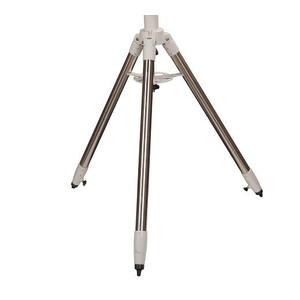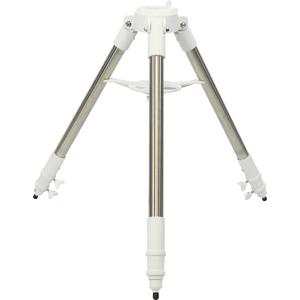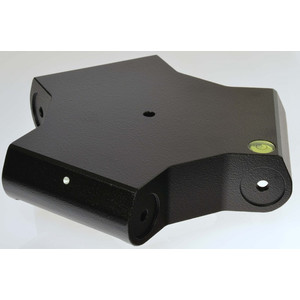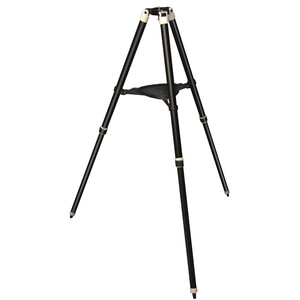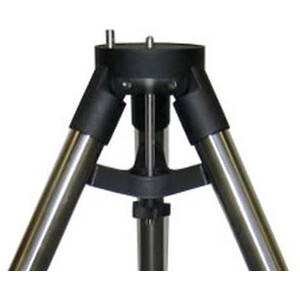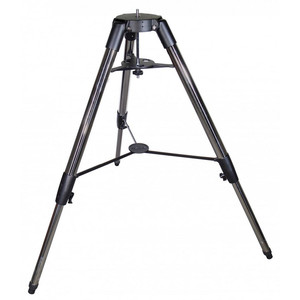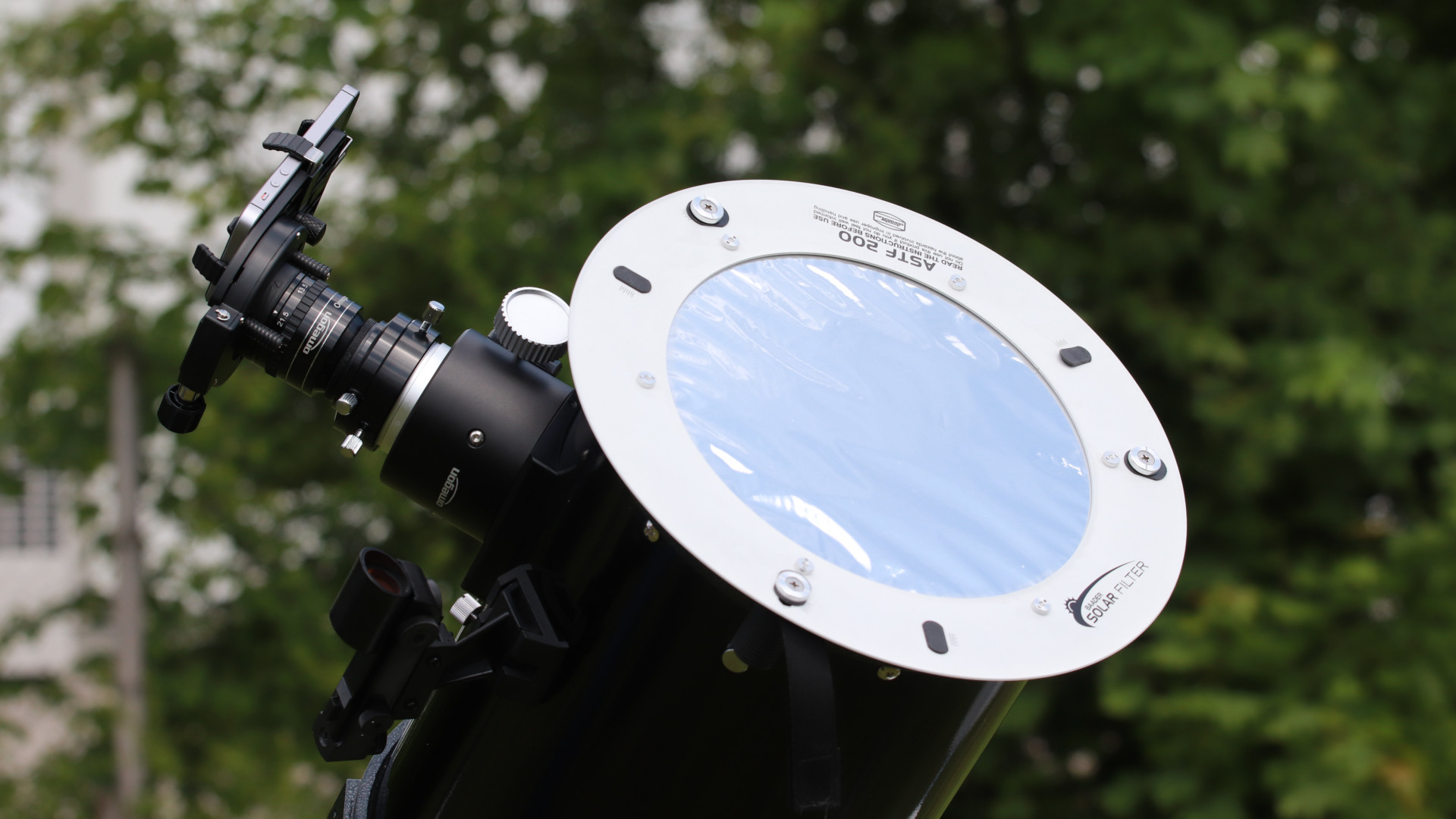Tripod
You’ll find tripods for every purpose on the market today. But it is important to choose the right product that will suit your needs.
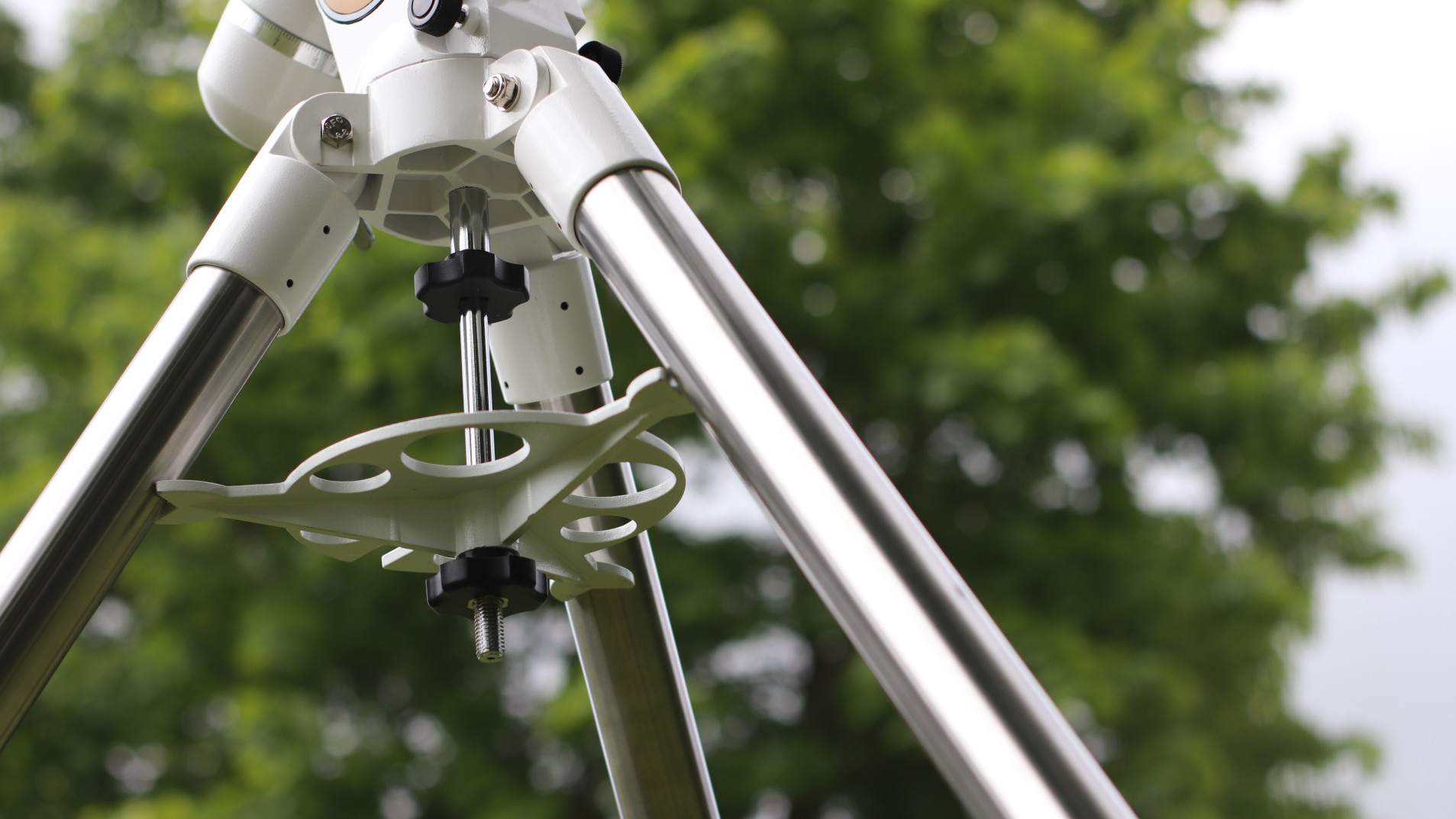
Have you ever looked through a telescope and wondered why the image constantly shakes and jitters? The likely reason is an insubstantial tripod.
The tripod is an often-underestimated part of the telescope system. If it is not sufficiently stable, even the best mount cannot deliver a shake-free image. A good-sized tripod improves the telescope’s performance and gives you more observing pleasure.
But it is not only important for a telescope’s operation. Astronomical observations with binoculars are also more fun with a tripod. 10-times magnification is about the limit for handheld observing for most people, and you will see more details with a tripod that provides you with a still image.
A camera tripod is all you need for binoculars
Everyone is aware of camera tripods – virtually every photographer, whether amateur or professional, needs one. Camera tripods are light, easy to transport and often even fit in a rucksack. Such a tripod is perfectly suited to observations with binoculars or a spotting scope. With a tilt or ball head acting as an altazimuth mount, you can find any target in the sky in an instant.
Unfortunately, this pragmatic solution is not suitable for telescopes, as the weight of the optics and the mount exceeds the load capacity of a camera tripod. Telescopes need their own astronomical tripods to be safe. These are more stable, but also heavier and won't fit in a backpack or on a bicycle. Most manufacturers offer their own tripods for their telescopes, which are ready to be attached to a mount.
What the tripod will achieve
Firstly, a tripod must carry its load safely: it must be stable. Stable means more than just not tipping over – in addition to load-bearing capacity, vibration damping is critical. Telescopes with their high magnifications will mercilessly highlight the smallest tremor. After an accidental knock or a gust of wind, any vibration must quickly dissipate, otherwise observing enjoyment is spoilt – not to mention astrophotography. Tripod, mount and telescope should therefore form a harmoniously balanced system.
Most tripods have extendable legs. This allows you to vary their height, thereby compensating for uneven terrain. Ultimately, the tripod must be level for the mount to do its job. Also, the height required to operate, for example, an achromatic refractor or a Schmidt-Cassegrain telescope can vary greatly. Here, too, the following applies: consider the tripod and the telescope together.
Finally, you should consider transportation. Can the tripod be folded and how easy is it to handle? Do you observe from home, or do you regularly go out into the countryside to find dark skies? How are you going to get your telescope to your chosen observation site? How quickly can you set up the tripod once you get there?
Also pay attention to the surface you are setting up on. No tripod can provide a steady image on a wooden porch. Place the telescope directly on a stable and solid surface, and ensure a secure footing. Some tripods have metal spikes that will provide a firm foothold.
The Dobsonian exception
A special type of tripod is the Dobsonian mount, named after its inventor John Dobson, an American amateur astronomer and missionary. In the Dobsonian telescope system – basically nothing more than an altazimuth-mounted Newtonian reflector – a wooden rocker box replaces the tripod and mount. The box, which runs on Teflon bearings, is so stable that even the largest telescopes can be mounted on it without shaking or wobbling – and so smooth-running that the earth's rotation can be simply compensated for by hand.
The right foundations
Some entry-level telescopes have quite flimsy tripods, this is often where costs are saved. However, the tripod is the bedrock of the telescope and therefore also of your observation experience. Pay attention to this point and, if required, choose a higher-quality model.
There are numerous tripods for every purpose on the market. There are tabletop tripods, travel tripods, classic wooden tripods, extra-light carbon tripods and stable stainless steel tripods. It is important to choose the right product that will suit your telescope, your mount, and your needs. In our showroom, you can take a look for yourself and closely examine different tripods. If we’re too far away, our consultants are themselves active observers and are very happy to help you by phone or e-mail.
Recommended tripods
